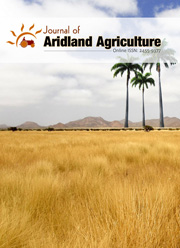Effect of cytokinins on growth and phenylpropanoid accumulation in Tartary buckwheat sprouts (Fagopyrum esculentum Moench)
DOI:
https://doi.org/10.25081/jaa.2021.v7.7198Keywords:
Tartary buckwheat, Fagopyrum esculentum Moench, phenylpropanoid, zeatin, 6-benzyl amino purine, kinetin, thidiazuronAbstract
This study analyzed the effect of plant hormones, zeatin, 6-benzyl amino purine (BAP), kinetin, and thidiazuron (TDZ) on the growth of Tartary buckwheat sprouts and analyzed the fresh weight, shoot and root length, and production of phenolic compounds. All the hormone-treated plants at the lowest concentration (0.1 mg/L) showed the highest levels of growth parameters (fresh weight, shoot, and root length) when compared to the control. Among the various hormones treatment, the plant treated with 1 mg/L of BAP, kinetin, and zeatin showed the highest total phenolic level, whereas the TDZ showed the highest accumulation of total phenolic at the lowest concentration (0.1 mg/L). A total of 6 compounds were identified (4-hydroxybenzoic acid, caffeic acid, chlorogenic acid, p-coumaric acid, rutin, and trans-cinnamic acid) were quantified by high liquid performance chromatography (HPLC) after treatment of plant with different concentrations of hormones. Among these individual phenolic compounds, at the higher hormonal concentration (1 mg/L) the rutin showed the highest accumulation in BAP, zeatin, and kinetin treated sprout, whereas in the TDZ treated sprout the rutin content was highest at the lowest concentration (0.1 mg/L). From these results, it is suggested that BAP, zeatin, and kinetin at the lowest concentrations might positively enhance the growth of buckwheat sprouts, whereas at the highest hormonal treatment the accumulation of the phenolic compounds was higher. However, in TDZ treatment the growth and phenolic compound accumulation were highest at the lowest concentration. From these results, it is showed that suitable concentrations might enhance the growth and phenolic compound accumulation in Tatary buckwheat sprout.
Downloads
Published
How to Cite
Issue
Section
Copyright (c) 2021 Ramaraj Sathasivam, Min Cheol Kim, Yong Suk Chung, Sang Un Park

This work is licensed under a Creative Commons Attribution-NonCommercial 3.0 Unported License.





 .
.